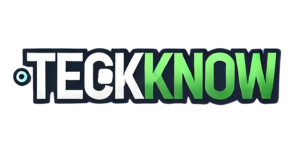JAKARTA, teckknow.com – Online Education: Learning in the Digital Age isn’t just a trend—it’s a total game-changer. I used to be super old-school, dragging myself to night classes after work, but look at me now. With everything moving online, I literally learn in comfy shorts and slippers from my couch.
As the world pivots toward digital-first experiences, Online Education has gone from niche experiment to mainstream reality. From university MOOCs to corporate e-learning platforms, millions now log on rather than show up in a classroom. In this “real talk” guide, I’ll share what I’ve seen work—and what trips learners and instructors up—so you can thrive in the virtual lecture hall.
1. Defining Online Education
Online Education refers to any learning that takes place over the internet rather than in a physical classroom. It encompasses:
- Synchronous formats: Live webinars, Zoom lectures, real-time discussion boards
- Asynchronous formats: Pre-recorded videos, discussion forums, self-paced modules
- Blended/Hybrid models: A mix of in-person and digital touchpoints
Key attributes:
- Accessibility across geographies and time zones
- Flexibility to learn at one’s own pace
- Reliance on digital tools for content delivery, assessment, and engagement
2. Timeline of Digital Learning Milestones
| Year | Innovation | Impact |
|---|---|---|
| 1995 | First Learning Management Systems (LMS) | Centralized course materials and grade tracking |
| 2008 | Launch of Coursera, edX, Udacity (MOOCs) | Democratized access to top-tier university courses |
| 2012 | Gamification & Mobile Learning | Increased engagement through game‐like elements and apps |
| 2020 | COVID-19 Pandemic Shift | Global surge in remote learning; catalyzed investment in EdTech |
| 2023 | AI-Powered Personalized Tutoring | Adaptive learning paths based on learner data and progress |
3. Core Components of Effective Online Education
- Platform & Infrastructure
- Robust LMS (Canvas, Moodle, Blackboard) or proprietary portals
- Reliable video-conferencing (Zoom, Microsoft Teams)
- Instructional Design
- Chunked micro-learning modules
- Multimedia content: slides, videos, quizzes, interactive simulations
- Engagement & Community
- Discussion forums, virtual office hours, peer review
- Social learning features: study groups, badges, leaderboards
- Assessment & Feedback
- Automated quizzes, project submissions, proctoring tools
- Timely instructor or AI-driven feedback loops
4. Benefits of Online Education
- Flexibility
• Learn anytime, anywhere—ideal for working professionals and caregivers. - Scalability
• One course can serve thousands of learners globally. - Cost Efficiency
• Reduced overhead (no physical classroom, printed materials). - Personalization
• Adaptive pathways tailor content to individual progress and preferences.
5. Challenges & Common Pitfalls
| Challenge | Why It Happens | Mitigation Strategies |
|---|---|---|
| Digital Fatigue | Extended screen time, Zoom overload | Break content into 20-minute sessions; schedule “no-screen” breaks |
| Lack of Social Interaction | Absence of hallway chats and study buddies | Foster virtual study groups; plan live Q&A sessions |
| Technical Barriers | Inconsistent internet access, unfamiliar tools | Provide tech onboarding; offer downloadable resources |
| Motivation & Accountability Loss | No external classroom schedule to enforce progress | Set clear milestones; use gamified progress tracking |
6. Best Practices for Success
- Design With the Learner in Mind
• Map out learner journeys; include clear objectives and outcomes. - Blend Live & On-Demand
• Combine scheduled webinars with self-study modules to cater to diverse needs. - Encourage Active Learning
• Use polls, breakout rooms, and collaborative documents. - Provide Continuous Feedback
• Quick quizzes with instant results; weekly “office hour” check-ins. - Build a Community
• Create social spaces (Slack, Discord, Facebook Groups) for peer support.
7. Tools & Technologies Shaping the Field
- Learning Management Systems: Canvas, Moodle, Blackboard
- Video Platforms: Zoom, Microsoft Teams, BigBlueButton
- Interactive Content: H5P, Articulate Rise, Genially
- Assessment & Proctoring: ProctorU, Respondus, Kahoot!
- Analytics & Personalization: Coursera Lab, EdCast, Smart Sparrow
8. Case Study: Launching a Hybrid Professional Course
Scenario: A marketing agency upskilled 200 employees through a 6-week blended program.
- Kickoff Webinar to set expectations and introduce instructors
- Weekly Micro-Modules (15–20 mins each) on strategy, analytics, and creative tools
- Peer Workshops in virtual breakout rooms to work on real client briefs
- Live Q&A Sessions with industry experts every Friday
- Final Capstone Project presented via recorded video and peer-reviewed
Results after 6 weeks:
- 95% completion rate (industry average is ~60%)
- 4.8/5 learner satisfaction score
- Immediate application: 75% of participants implemented new tactics within a month
9. Trends & Future Outlook
- AI-Driven Tutors & Chatbots that answer questions 24/7
- Virtual & Augmented Reality for immersive simulations
- Blockchain Credentials to secure and share digital certificates
- Micro-Credentials & Nano-Degrees for targeted skill validation
- Social Learning Networks integrated directly into LMS platforms
10. Final Takeaways
My desk-side observations make it clear: Online Education isn’t a passing fad—it’s a paradigm shift in how we learn and work. Success hinges on thoughtful design, human-centered engagement, and the smart use of technology. Start by mapping learner needs, blend synchronous with asynchronous, and always build in community touchpoints. Get these right, and your digital classroom will be a vibrant, effective, and scalable learning environment.
In the digital age, the best classroom is the one that adapts to the learner—not the other way around. Embark on your online education journey today and see how far it can take you.
Boost Your Proficiency: Learn from Our Expertise on Technology
Don’t Miss Our Latest Article on Human-Computer Interaction: Designing Intuitive Digital Experiences!
